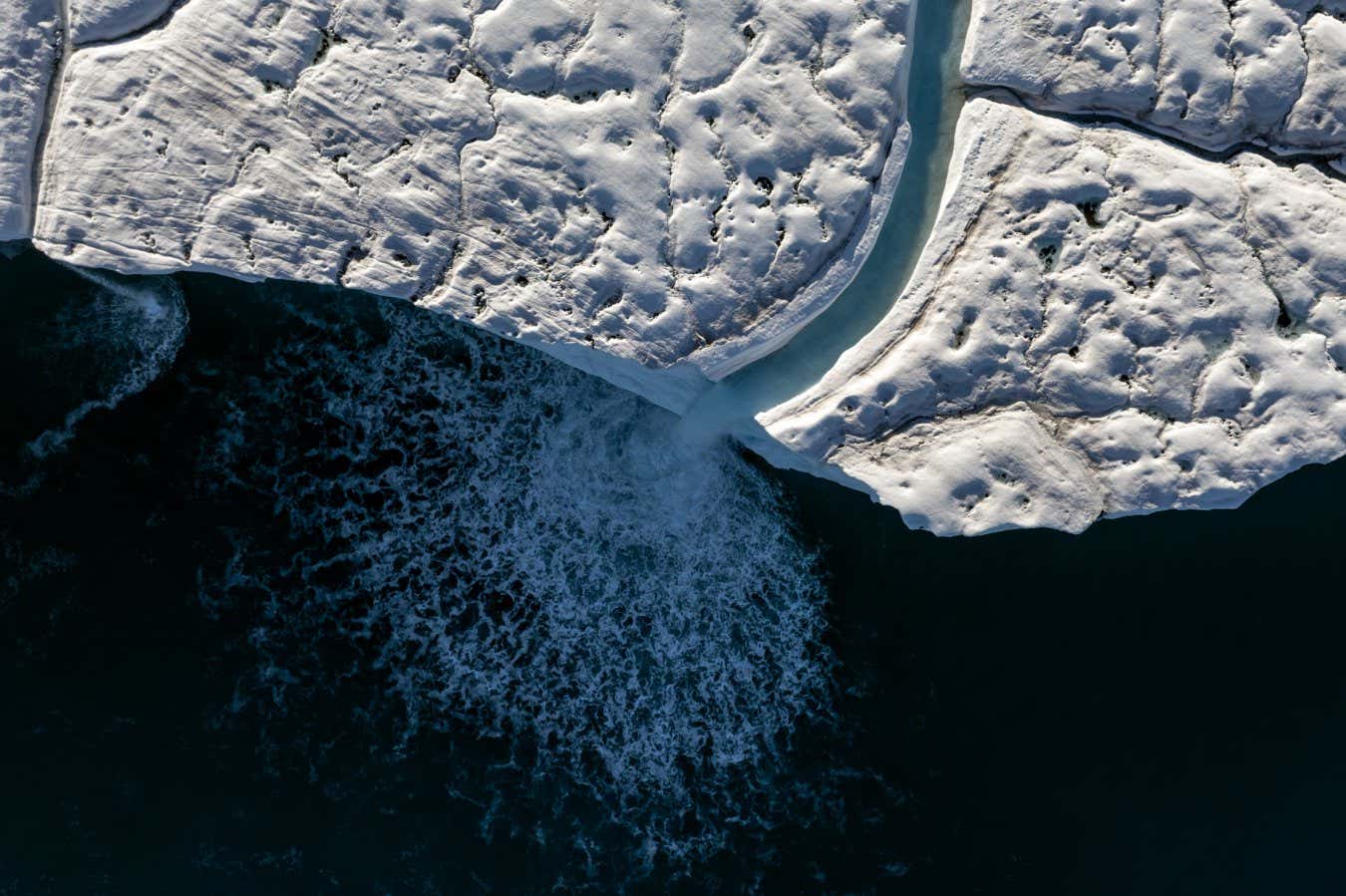Environment
A World Meteorological Organization report details a long list of grim records for everything from CO2 levels and temperature to sea ice loss and sea level rise

Meltwater runs off the Bråsvellbreen Glacier in the Norwegian archipelago of Svalbard
Sebnem Coskun/Anadolu via Getty Images
Unprecedented levels of ocean heat, ice melt and sea level rise are among the many key measures of climate change setting alarming records in recent years, according to the World Meteorological Organization’s (WMO) State of the Global Climate report for 2024.
“We saw record temperatures across wide areas,” says John Kennedy at the WMO. Reversing some of the resulting changes would take hundreds or thousands of years, the report warns.
The report sets out a grim list of unwanted records. For instance, the rate of sea level rise has doubled since satellite measurements began, increasing from 2.1 millimetres per year between 1993 and 2000 to 4.7 mm per year between 2015 and 2024.
Glaciers are losing ice faster than ever, with the largest loss of glacier mass in a three-year period occurring in the past three years. Losses were particularly big in Norway – including the northern archipelago of Svalbard – as well as in Sweden and the tropical Andes.
The 18 years with the lowest extent of summer sea ice in the Arctic Ocean were the past 18 years, and the three years with the lowest extent of sea ice around the Antarctic continent were the past three years.
“What happens in the poles doesn’t necessarily stay in the poles,” warns Kennedy, meaning changes in these areas can affect the climate around the whole planet.
A new record for ocean heat – a key measure of how much additional heat the planet is accumulating – has been set in every one of the past eight years. And the 10 warmest years on record were the past 10 years.
The report also notes that 2024 was probably the first calendar year to be 1.5°C warmer than the pre-industrial era, with an average global near-surface temperature of 1.55°C above the 1850 to 1900 average, plus or minus 0.13°C. This uncertainty in the measurement means there is also a chance it wasn’t warmer than 1.5°C.
A single year above this value doesn’t mean the 1.5°C target set out in the Paris Agreement has been breached, says Kennedy. While not clearly defined, most climate scientists agree it refers to the average temperature over something like 20 years rather than a single year.
The report also outlines three methods that are being considered for defining when we have exceeded the Paris target. According to these, the global climate is now 1.34°C, 1.37°C or 1.41°C warmer than the 1850 to 1900 average.
The error bars for these three methods, however, are all wide enough to exceed 1.5°C, meaning there is a small chance we have already exceeded the 1.5°C Paris target. “We can’t rule out 1.5 by these methods,” says Kennedy.
Topics:























